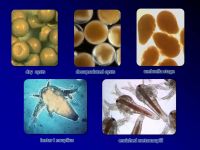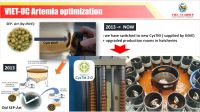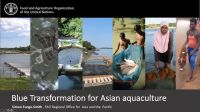The GCA +20 was successfully held as a hybrid event from 22-25 September, with physical participation at the venue in Shanghai, China, and international participation via video conference. A total of 1,728 people participated in the event, of which 500 were physically present in Shanghai. A key output from the GCA +20, the Shanghai Declaration is a call to action that highlights the principles and strategic pathways to maximise the contribution of sustainable aquaculture in achieving the Sustainable Development Goals, with a special focus on “Leaving no one behind”.
Join us online at the SDG-aligned Artemia Aquaculture Workshop, which will be held on 22 September, via Zoom. With the expansion of hatchery production, the demand for Artemia cysts has continued to increase and annual consumption is now estimated at 3,500 – 4,000 tonnes, underpinning the production of over 10 million tonnes of high-value aquaculture species. Approximately 90 percent of the current Artemia production is harvested from inland salt lakes. The purpose of the Artemia workshop is to explore needs and opportunities for a new international initiative to guarantee a more sustainable provision of Artemia, both from natural sources and from controlled extractive Artemia farming integrated with salt production and other fish/crustacean aquaculture. View programme | register
Videos from our recent webinar Status of the use of Artemia cysts in fish and crustacean hatcheries around the world are now available on NACA's Youtube channel. Please consider subscribing for more technical aquaculture content!
A video recording is now available of a presentation by Dr Simon Funge-Smith, FAO Regional Office for Asia and the Pacific at the inception meeting for the FAO-funded project "Blue transformation in aquaculture", 30 August 2021. Please visit NACA's Youtube channel to view the video.
Video recordings of technical presentations from the webinar on Culture-based fisheries for rural development (31 May 2021) are now available on Youtube. Presentations cover technical constraints, the socio-economic and impact on communities, micro-nutrient security, monitoring and evaluation, improving water quality through stocking selected species, biodiversity considerations, and success stories.
Please visit NACA's Youtube channel to access the videos. Our Youtube channel is brand new, please consider subscribing for more technical aquaculture videos!




